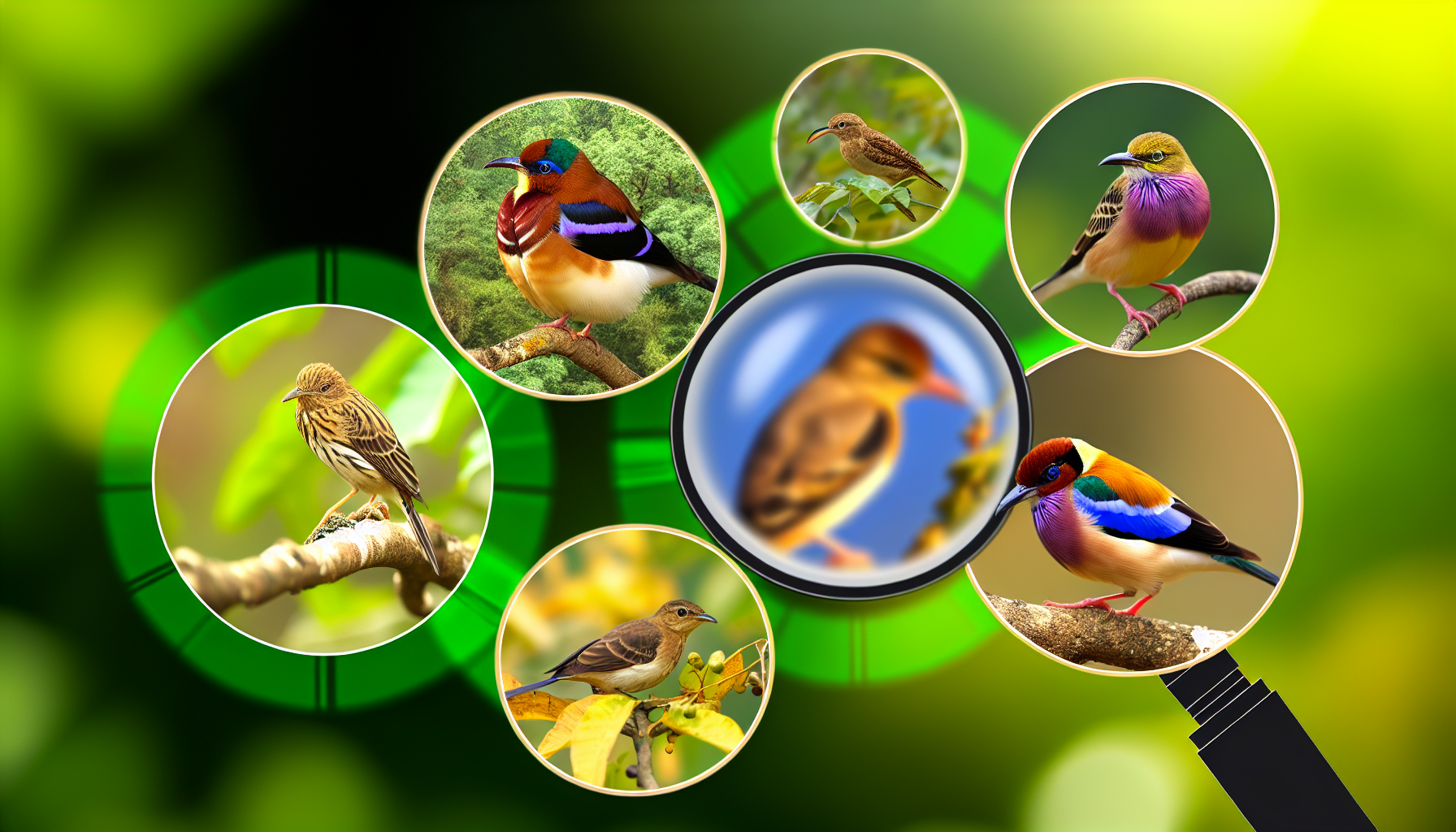
Bird names are as varied and colorful as the feathered creatures themselves. In this article, we delve into the fascinating world of how birds acquire their common names, the principles of ornithology that guide these choices, and the passionate community of birdwatchers who celebrate these winged wonders.
The Art of Avian Nomenclature
The Art of Avian Nomenclature delicately intertwines with tradition, observation, and scientific discovery, presenting a fascinating panorama on how birds receive their names. Historically, birds were often named based on striking physical features like the vibrant plumage of the Scarlet Tanager, behaviors such as the acrobatic dives of the Peregrine Falcon, or even their habitats, exemplified by the Marsh Wren. An interesting case of evolution in bird naming is the Long-tailed Duck, formerly known as the Oldsquaw, illustrating how sensibilities and respect for cultural inclusivity have started to influence nomenclature practices.
The ornithological community plays a pivotal role in standardizing bird names, ensuring that each name is unique, descriptive, and reflective of the bird’s essence. The International Ornithological Congress (IOC) works tirelessly to update and maintain a comprehensive database of bird names, which aids in global conservation and research efforts. Moreover, grassroots campaigns such as ‘Bird Names for Birds’ have been instrumental in advocating for names that respect and honor the natural beauty of the species without human-imposed narratives or historical baggage.
This journey through the art of naming not only highlights the deep connection humanity has with the avian world but also underscores a growing commitment to more ethical and respectful practices in ornithology. As we venture into discussing the scientific discipline behind these feathered marvels, it becomes evident that naming is but the gateway to deeper understanding and connection with the avian realm.
Ornithology The Science Behind the Feathers
Building on the rich tapestry of avian nomenclature discussed in the previous chapter, we delve into the scientific discipline of ornithology, which lays the foundation for understanding the intricate world of birds and informs the principles guiding their naming. Ornithology, the branch of zoology dealing with birds, employs a multifaceted approach to study the anatomy, behavior, ecology, and genetics of birds, significantly influencing how they are named. Through taxonomy, scientists classify birds into groups based on shared characteristics, a process that has evolved with technological advancements in DNA analysis. This molecular approach has revealed unexpected relationships between species, compelling the ornithological community to revise names to better reflect genetic kinships.
For instance, the comprehensive analysis of bird genetics has led to the reclassification of certain raptors, splitting the Falconidae family and necessitating updates in common and scientific names to mirror their true phylogenetic positions. Similarly, the study of bird migration through satellite tracking technology has unveiled the interconnectedness of migratory patterns across continents, shedding light on species’ distribution and leading to more accurate naming based on geographical range and habitats.
Additionally, ornithological research into bird behavior and ecology contributes to naming practices by highlighting unique aspects of birds’ lives that may not be immediately apparent through physical examination alone. The understanding of specific nesting behaviors, dietary needs, or mating dances can inspire names that encapsulate these distinctive traits.
As ornithological techniques continue to advance, the discipline ensures that bird naming remains a dynamic process, reflective of the latest scientific insights. This not only aids in the scientific classification but also enriches the cultural and educational value of bird names, connecting people more deeply to the natural world. In the next chapter, we will explore how the hobby of birdwatching, supported by the scientific backbone of ornithology, plays a vital role in the organic development of bird nomenclature, strengthening the bond between humans and these fascinating creatures of the sky.
Birdwatching A Symphony of Names and Nature
Birdwatching, often seen as a gentle pastime, plays a pivotal role in the evolving catalogue of avian monikers, offering a unique bridge between the scientific rigour of ornithology and the broader public’s engagement with birdlife. It is through the keen eyes and meticulous documentation of birdwatchers and twitchers that many bird species have been observed in their natural habitats, contributing significantly to our understanding of avian diversity. This community, ranging from amateurs with a simple love for the outdoors to seasoned experts wielding powerful binoculars and spotting scopes, has a profound impact on the organic development of bird nomenclature.
The contribution of birdwatchers extends beyond mere observation; it encapsulates the essence of citizen science. Their efforts in documenting sightings, behaviors, and even vocalizations provide a wealth of data that supports ornithological research, complementing the scientific study of birds. This synergy between birdwatching and ornithology fosters a deeper understanding of bird species and their ecosystems, which, in turn, influences the naming process. Names often reflect physical characteristics, behaviors, or habitats that are highlighted through both casual observation and scientific study, making bird names a melodic testament to the partnership between birdwatchers and ornithologists.
This collaboration not only enriches the tapestry of common names but also aids in conserving the avian world. As birdwatchers traverse forests, wetlands, and urban areas, their findings contribute to databases and monitoring programs that track species’ health and population trends. This constant influx of data from the field helps identify at-risk species, guiding conservation efforts and policy-making. Thus, birdwatching transcends its recreational roots, becoming a vital cog in the machinery of biodiversity conservation and the stewardship of our planet’s avian treasures. Through their dedication, birdwatchers ensure that each name in the avian lexicon is not just a label, but a note in the greater symphony of nature’s diversity, echoing the interconnectedness of all living things.
Conclusions
Bird naming is a dynamic and collaborative field combining tradition, scientific insight, and community engagement. From the methodical classifications of ornithology to the enthusiastic observations of birdwatchers, every name tells a story, invites curiosity, and serves as a testament to the wonder of our feathered friends.







